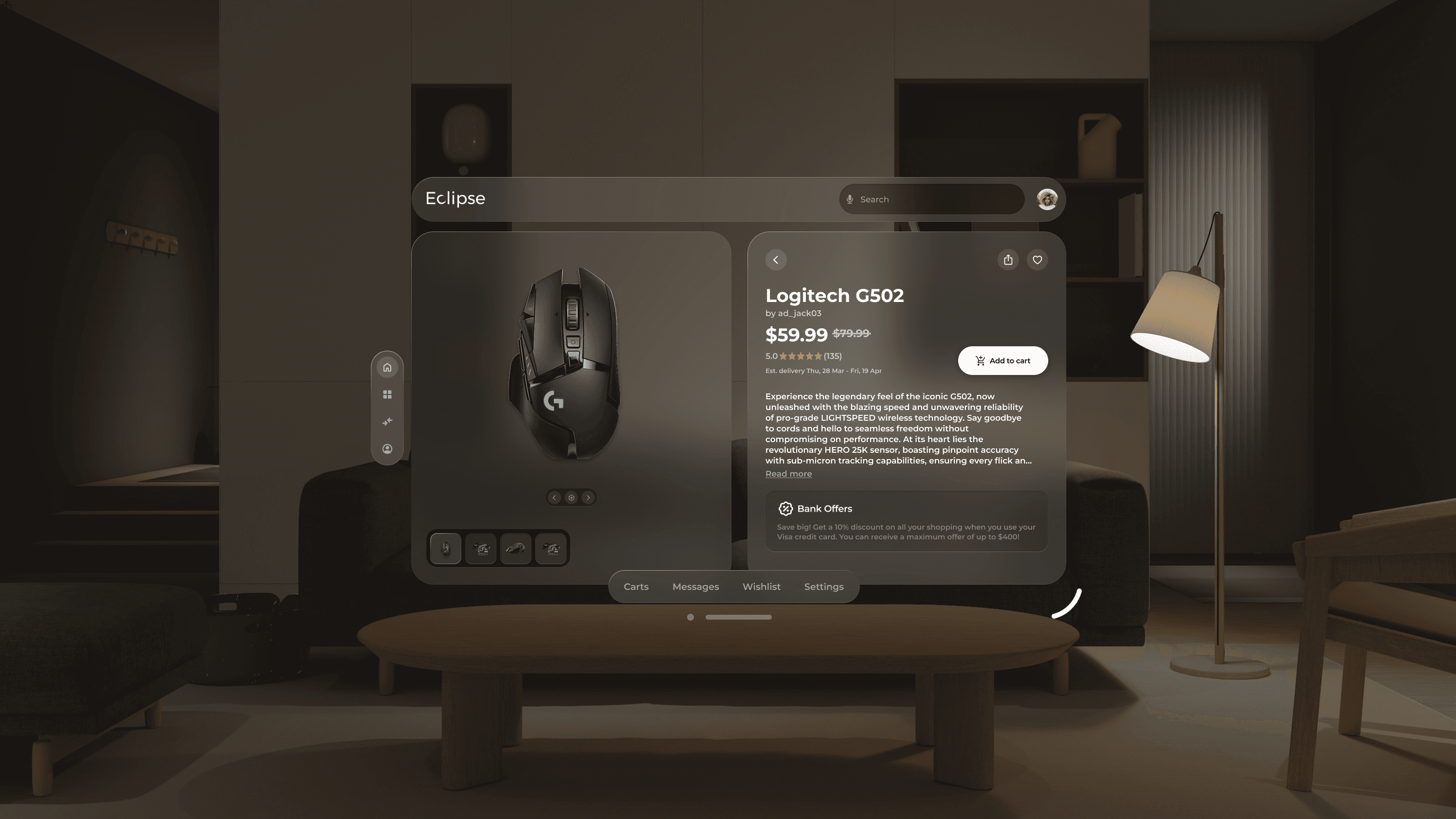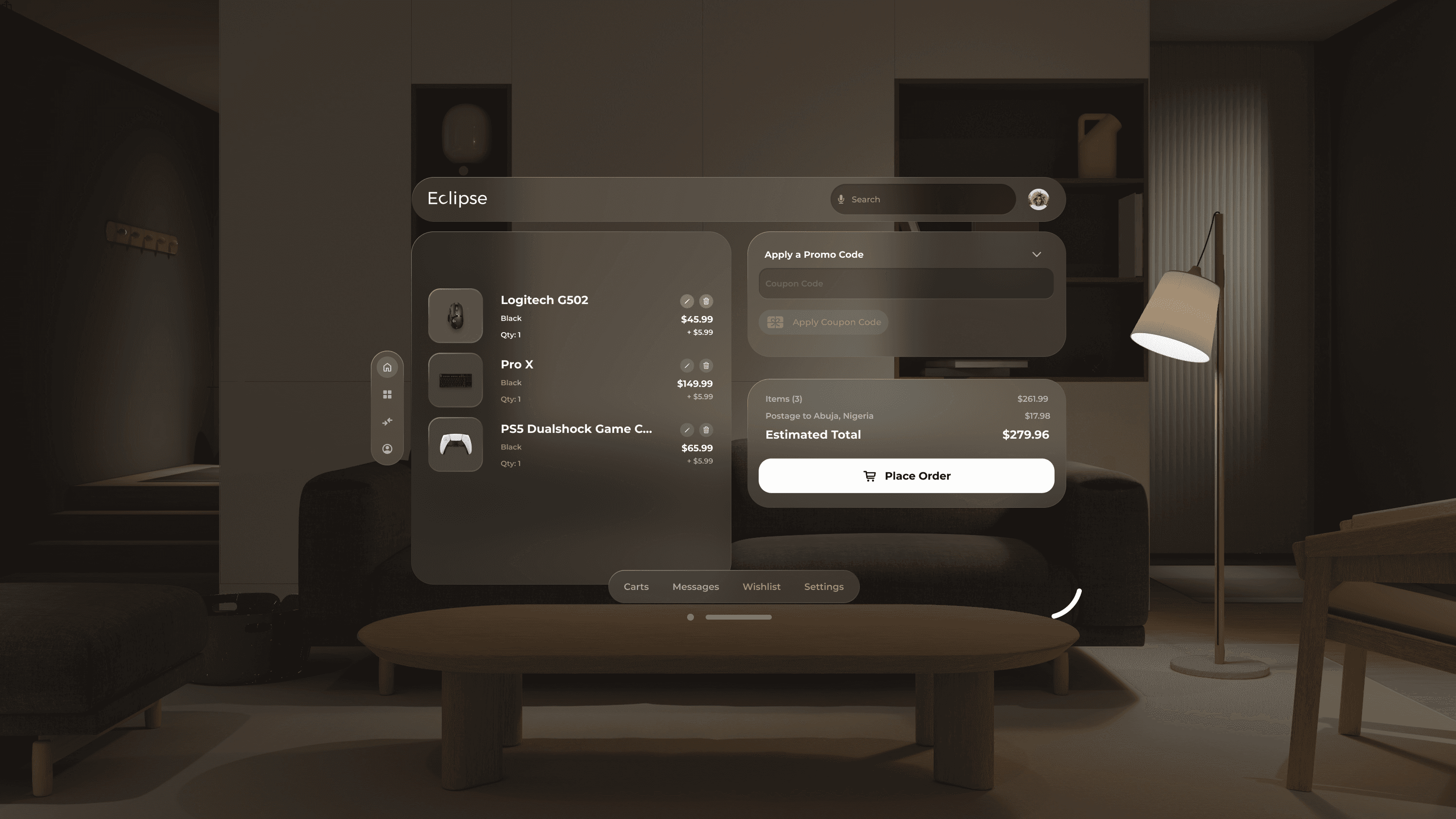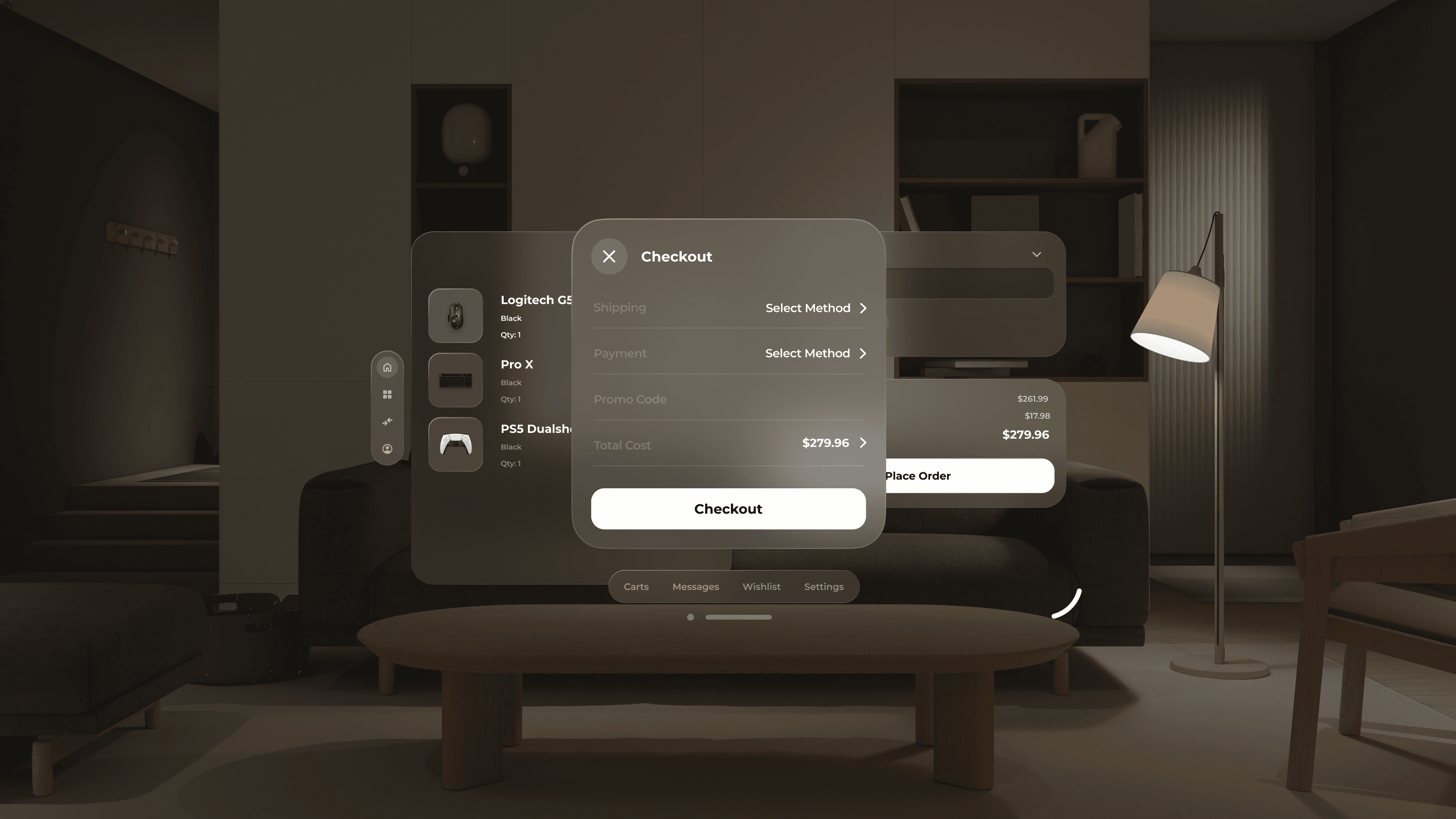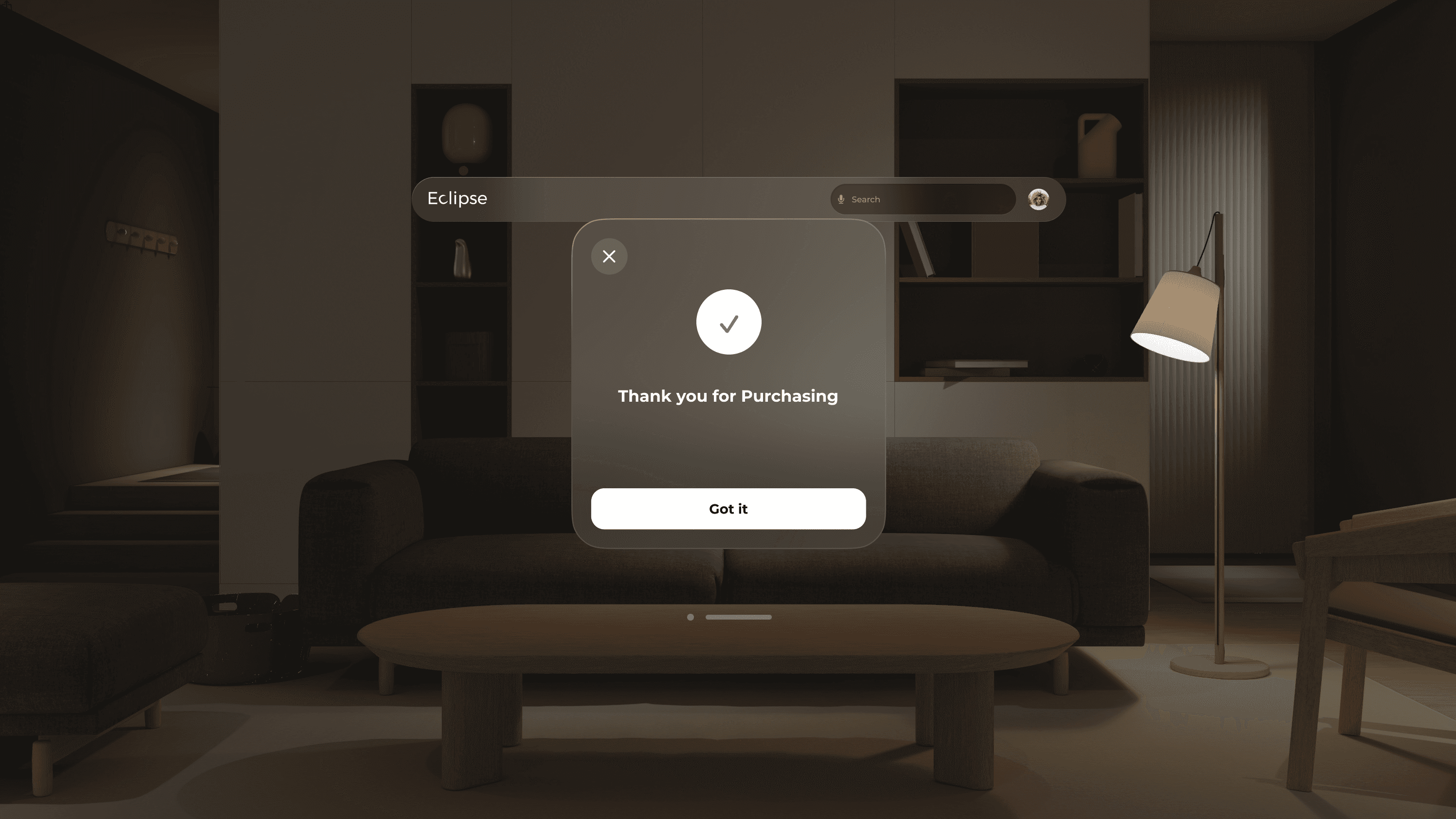Eclipse Gaming Store - VisionOS Adaptation
Role
Industry
Duration
Understanding the User (in the context of VisionOS)
User Research Summary: The initial research involved interviews and surveys with gamers to understand their needs and pain points. This research is foundational and still relevant, but considered how these needs translate to a spatial environment.
Key User Pain Points (and Vision OS implementations):
Limited Product Selection: Eclipse (Vision OS) provided detailed, interactive 3D views of products, with augmented reality overlays to verify features and authenticity.
Lack of Authenticity: Eclipse (Vision OS) provided detailed, interactive 3D views of products, with augmented reality overlays to verify features and authenticity.
Price Comparison Difficulties: Eclipse (Vision OS) interfaces displayed price comparisons in a clear, visual format, allowing users to "place" different products side-by-side in their virtual space.
Unclear Product Information: Eclipse (Vision OS) enabled interactive product exploration, letting users view specifications, reviews, and virtual demonstrations in a more engaging way than traditional 2D screens.
Persona: Gary Smith (VisionOS Context)
Gary's frustration with cluttered interfaces and slow loading times translates to a desire for intuitive spatial navigation and smooth, responsive interactions in VisionOS.
His need for detailed product information and personalized recommendations can be addressed through interactive 3D models, spatialized reviews, and AI-driven recommendations within the VisionOS environment.
Design Improvements (VisionOS Specific)
The improvements made to the mobile app (e.g., clear pricing, detailed product views) were translated and enhanced for Vision OS.
Example: Instead of just showing prices, Eclipse (Vision OS) allowed users to see how different setups looked in their own virtual gaming space, including projected lighting effects and size comparisons.
Accessibility
Accessibility is crucial. VisionOS offers unique accessibility considerations:
Alternative Text for 3D Objects: Providing descriptions for virtual objects.
Scalable UI Elements: Ensuring that all text and interactive elements can be easily resized in 3D space.
Comfort and Motion Sensitivity: Designing interactions that minimize motion sickness and discomfort, with adjustable settings for movement and visual effects.
Voice Control and Gestures: Offering alternative input methods to accommodate users with motor impairments.
Mockups
Next steps
Iterative design and testing in the VisionOS environment.
Exploration of advanced features like virtual product demonstrations, multiplayer shopping with friends, and integration with gaming platforms.
A/B testing of different spatial layouts and interaction methods.
Continuous feedback from the gaming community to refine the VisionOS experience.
I've structured this case study to highlight the key considerations for adapting the Eclipse Gaming Store to VisionOS, using the information from your provided document as a foundation.
For inquiries or to take a closer look at my projects and design process, please feel free to reach out to me.
Other projects
Eclipse
An app that offers a seamless and enjoyable shopping experience for gamers
RiverSide Dashboard
Digital health platform that offers an organ monitoring feature that allows real-time tracking of essential organ functions, such as those of the heart and lungs.
Jobwharf Website Redesign
Streamlining the Job Search Experience: A Comprehensive Case Study
Collection of branding projects
Creative branding Journeys: Tailored Solutions for Every Industry










